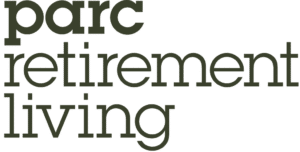How Affordable Is it to Live in a Retirement Residence?
in Independent LivingWritten by Sheila Hansen

You’ve looked around at retirement residence options, and you like what you see. But you’re also wondering if you can afford to live in such a community.
As it turns out, older adults are often surprised to discover they have the financial resources to live in a full-service retirement community. In fact, many costs associated with a private home are included in a monthly residence rate. And that’s good news, especially considering that almost a third of B.C. seniors aged 75-plus intend to move into a retirement residence in the near future.
For a clear picture of those costs consider the 4 benefits to living in an all-inclusive retirement residence.
4 underlying benefits of retirement residence living
The flexibility of renting
Rent provides you with flexibility should your circumstances change. For example, if your health changes and you require a higher level of care, you’d give notice rather than have to sell real estate into a competitive market. Renting also makes downsizing (i.e., from a two-bedroom to a one-bedroom suite) or upsizing easier.
SECURE FUTURE®
PARC rental agreements include the SECURE FUTURE® guarantee, which caps rent increases for the next four years. “SECURE FUTURE® provides residents with certainty for budgeting. It provides some peace of mind.”
Wealth tax avoidance
Governments are starting to tax wealth, citing the speculation tax and school taxes on properties over $3 million. “The longer you hold onto a piece of real estate, the more likely it’s going to incur ever-increasing taxes.” And deferring takes away from your future wealth, he adds.
Safety in community
Intangible benefits include watchful eyes and a community shield. Our best source of information on our residents is other residents and staff. If we don’t see Mrs. Smith one day, we’ll check to see what’s going on with Mrs. Smith . Residents find safety with numbers and like-minded people.

Costs and potential savings of residence living
Property expenses
Living in your own home brings other expenses such as condo fees or mortgage payments, as well as property taxes, property and content insurance, and repair/maintenance costs. You’ll then want to compare these costs to the cost of a suite at a PARC residence by choosing your desired suite type. The worksheets provides the corresponding starting monthly rental price for each suite type at each residence.
Even if you’re mortgage free, Baena points out, you still have to cover these other costs. At PARC, however, all these costs except content insurance are included in the monthly rate.
Utilities
Next, note your monthly utilities expenses. Electricity, gas, and water are included in your PARC monthly rental fee. We also have exclusive and deeply discounted packages on phone and high speed Internet with Shaw Communications that residents can take advantage of. And thanks to PARC’s SECURE FUTURE® guarantee, residents don’t have to worry about rising utility prices for the next few years.
Security and emergency response
Do you pay monthly monitoring costs in your current home? And do you worry about getting help should something happen? PARC residences are equipped with fire and security systems, as well as a 24/7 emergency communications system in all suites and common areas, via pull chords or pendants.
Meals
How well are you eating, what are you eating?” As part of PARC’s healthy lifestyle philosophy, three nutritious meals a day and snacks are included in the monthly fee (note: dining plans at select residences like Oceana PARC vary).
Shopping, entertainment and gardening
Are you currently paying vehicle or transit costs? PARC properties offer a car or shuttle service for local shopping trips, appointments and social events. And while special outings – an evening at the Vancouver Symphony Orchestra or a daytrip to VanDusen Botanical Garden – require an admission fee, PARC’s full-blown activity package includes these activities as well as cribbage, Tai Chi and more. For avid gardeners, PARC provides green houses and planter beds, along with soil and irrigation – items you might also be paying for in your current home.

Housekeeping and laundry
Do you currently pay to have your house cleaned? Weekly light housekeeping is part of PARC’s full-service offering. And all suites have personal laundry facilities, though residents can pay extra to have their laundry done.

